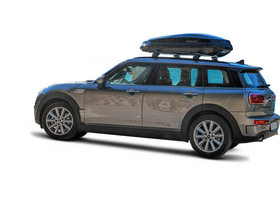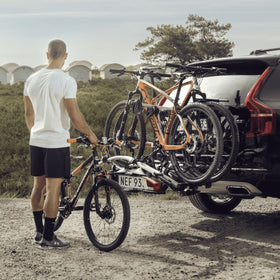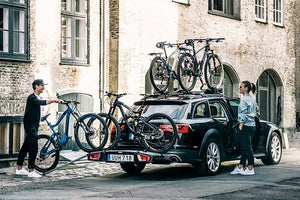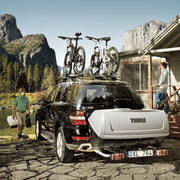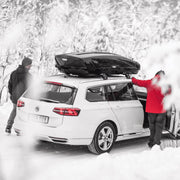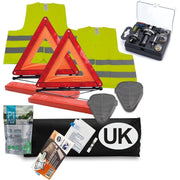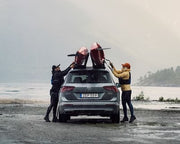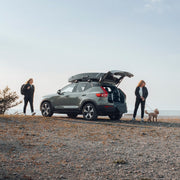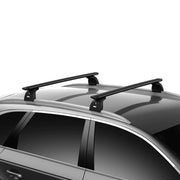

Securing the Load - Roof Bars: The Ultimate Guide to Safe and Efficient Car Top Carrying
The use of roof bars is a convenient solution for transporting extra gear, be it for a family vacation, a camping trip, or carrying sports equipment. However, the key to a safe and successful journey lies in properly securing your load. This comprehensive guide will delve into the best practices for securing cargo on roof bars, ensuring a worry-free travel experience.
Understanding Roof Bars
The Functionality of Roof Bars
Roof bars are designed to provide additional storage space on top of your vehicle. They are adaptable and can carry a wide range of items, from luggage boxes to bicycles.
Types of Roof Bars
There are various types of roof bars, including universal bars that fit any car model and specific-fit bars designed for particular models, offering optimal compatibility and stability.
Importance of Properly Securing Loads
Safety First
An improperly secured load can pose serious safety risks, including the potential for accidents caused by falling debris.
Legal Compliance
There are legal requirements for load securing which, if not complied with, can result in fines or more serious legal consequences.
Selecting the Right Equipment
Roof Bar Compatibility
Ensure that the roof bars you choose are compatible with your vehicle’s make and model for maximum safety and efficiency.
Quality of Securing Equipment
Invest in high-quality straps and clamps. Durable materials and reliable locking mechanisms are crucial for secure transportation.
The Art of Loading
Weight Distribution
Proper weight distribution is essential. It affects vehicle handling, so heavier items should be placed at the center of the roof bars.
Height and Width Limits
Be aware of your vehicle’s new dimensions. Overloading or uneven stacking can lead to dangerous situations, especially when passing under low bridges or in tight spaces.
Securing Techniques
Using Straps and Ropes
Straps and ropes are fundamental in ensuring that the load on your roof rack is secured firmly. They prevent the cargo from shifting or falling off during transit, which could lead to dangerous road situations or damage to your cargo.
Types of Straps and Ropes
-
Ratchet Straps: These are widely used because of their strength and reliability. They come with a ratcheting mechanism that helps tighten the load securely.
-
Cam Buckle Straps: Ideal for lighter loads, cam buckle straps are easier to handle than ratchet straps and are less likely to damage delicate cargo.
-
Bungee Cords: While not as secure as ratchet or cam buckle straps, bungee cords can be useful for holding down lighter items or adding extra security to a well-secured load.
-
Rope: A traditional choice, ropes are versatile and, when used correctly, can be quite effective. It’s essential to know the right type of knots to use for securing cargo.
Selecting the Right Straps or Ropes
-
Strength and Durability: Choose straps or ropes that are strong enough to hold your cargo. Check the break strength and load limit before purchasing.
-
Length: Ensure the straps or ropes are long enough to go over your cargo and roof rack comfortably.
-
Material: Weather-resistant materials like nylon or polyester are preferable, as they can withstand elements without degrading.
How to Secure Cargo with Straps
-
Place the Cargo: Evenly distribute the weight on the roof rack.
-
Loop the Straps: Run the straps over the cargo and under the roof bars, making sure they are not twisted.
-
Tighten Securely: If using ratchet straps, use the ratchet mechanism to tighten until the cargo is firmly held. With cam buckle straps, pull the strap through the buckle and tighten.
-
Check for Movement: After securing, gently shake the cargo to ensure there is no movement.
-
Tie Off Excess Strap: Secure any loose ends to prevent them from flapping in the wind, which could cause damage or noise.
Using Ropes Effectively
-
Choose the Right Rope: Use a strong, durable rope like nylon or polyester. Avoid using elastic ropes as the primary securing method.
-
Learn Knots: Know how to tie effective knots. The trucker’s hitch is a popular choice for its combination of stability and ease of untying.
-
Double Check: After tying the rope, double-check to ensure the knots are secure and the load is stable.
Safety Tips
-
Regularly Check Tension: Straps can loosen over long journeys, so it’s important to stop and check the tension regularly.
-
Avoid Over-Tightening: Be cautious not to over-tighten, especially with ratchet straps, as this could damage both the cargo and the roof rack.
-
Use Enough Straps: Use multiple straps to distribute the load evenly and provide adequate security.
-
Visibility: Make sure the straps or ropes do not cover any lights or license plates on your vehicle.
Locking Mechanisms
If your roof bars come with locking mechanisms, use them to their full potential to prevent theft and accidental dislodging of the cargo.
Regular Inspection and Maintenance
Pre-Travel Checks
Always conduct a thorough check of your roof bars and the load before setting off. Make sure everything is tight and secure.
Maintenance of Roof Bars
Regular maintenance of your roof bars is crucial. Check for any signs of wear or damage, and ensure all components are functioning correctly.
Driving with a Loaded Roof
Adjusting Your Driving Style
With a loaded roof, your vehicle’s handling will change. Drive more cautiously, reduce your speed, and allow for longer braking distances.
Wind Resistance and Fuel Efficiency
Be prepared for increased wind resistance and a decrease in fuel efficiency. The added weight and altered aerodynamics can impact your vehicle’s performance.
Emergency Situations
In Case of Load Shift
If you feel a shift in your load while driving, safely pull over and readjust the load as necessary. It’s better to stop and check than to risk an accident.
Accident Protocols
In case of an accident, know the steps to secure your load and prevent further hazards on the road.
Conclusion
Securing the load on your roof bars is not just a matter of convenience, but a critical aspect of road safety. By selecting the right equipment, mastering secure loading techniques, and adhering to safety guidelines, you can ensure that your journey remains safe and enjoyable. Remember, taking the time to load and secure your cargo correctly can make all the difference between a stress-free trip and a hazardous one. So, next time you’re gearing up for a trip, give your roof load the attention it deserves – your safety, and that of others, depends on it.

